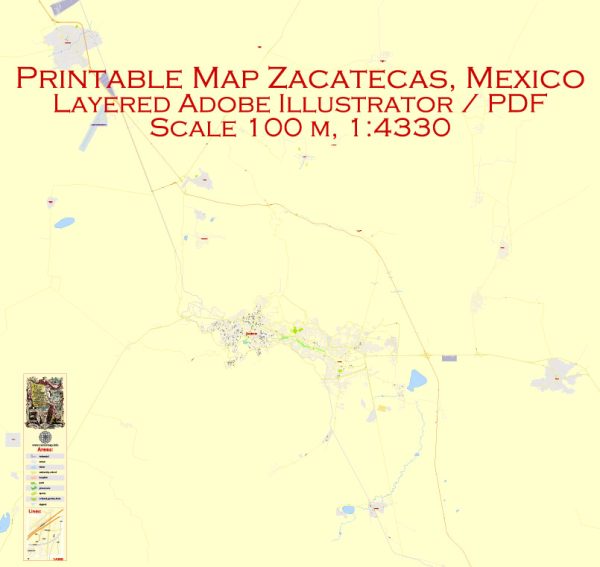Zacatecas, located in north-central Mexico, has a rich history that spans pre-Columbian civilizations, Spanish colonial rule, and modern development. Here’s an overview of the history of urban development in Zacatecas:
- Indigenous Peoples: Before the arrival of the Spanish, the region was inhabited by indigenous peoples, including the Zacateco and Guachichil tribes. These groups engaged in agriculture and mining, activities that would later influence the region’s development.
- Spanish Colonial Period: The Spanish explorer Juan de Tolosa founded the town of Zacatecas in 1546 after the discovery of silver deposits in the area. The discovery of significant silver mines, such as those in Cerro de la Bufa, led to a rapid influx of Spanish settlers and the establishment of Zacatecas as a major mining center. The city’s layout and architecture were influenced by Spanish colonial urban planning, characterized by a central square (plaza), a cathedral, and narrow streets.
- Economic Prosperity: Zacatecas became one of the wealthiest cities in colonial Mexico due to its silver production. The wealth generated by the mines led to the construction of grand churches, mansions, and public buildings, contributing to the city’s architectural richness.
- Cultural and Artistic Flourishing: The wealth generated from mining also contributed to the development of a vibrant cultural and artistic scene. The city boasts several colonial-era churches and buildings that reflect the artistic and architectural styles of the time.
- Mexican War of Independence and 19th Century: Zacatecas played a significant role in the Mexican War of Independence (1810-1821). The city saw battles between Mexican insurgents and Spanish royalists. In the 19th century, Zacatecas underwent various political and social changes, including the implementation of liberal reforms that affected the church’s role in society.
- Mexican Revolution: The early 20th century brought political and social upheaval, including the Mexican Revolution (1910-1920). Zacatecas, like many other regions, experienced changes in land ownership and political structures during this period.
- Modern Development: In the 20th and 21st centuries, Zacatecas has continued to evolve as a cultural, economic, and educational hub. The city has expanded beyond its colonial core, with the development of modern infrastructure, industries, and residential areas.
- UNESCO World Heritage Site: Zacatecas was designated a UNESCO World Heritage Site in 1993, recognizing its historical and architectural significance. The historic center of Zacatecas preserves its colonial charm and serves as a major tourist attraction.
Today, Zacatecas stands as a testament to the intertwining of indigenous, Spanish colonial, and modern influences, making it a unique and culturally rich city in Mexico.


 Author: Kirill Shrayber, Ph.D.
Author: Kirill Shrayber, Ph.D.